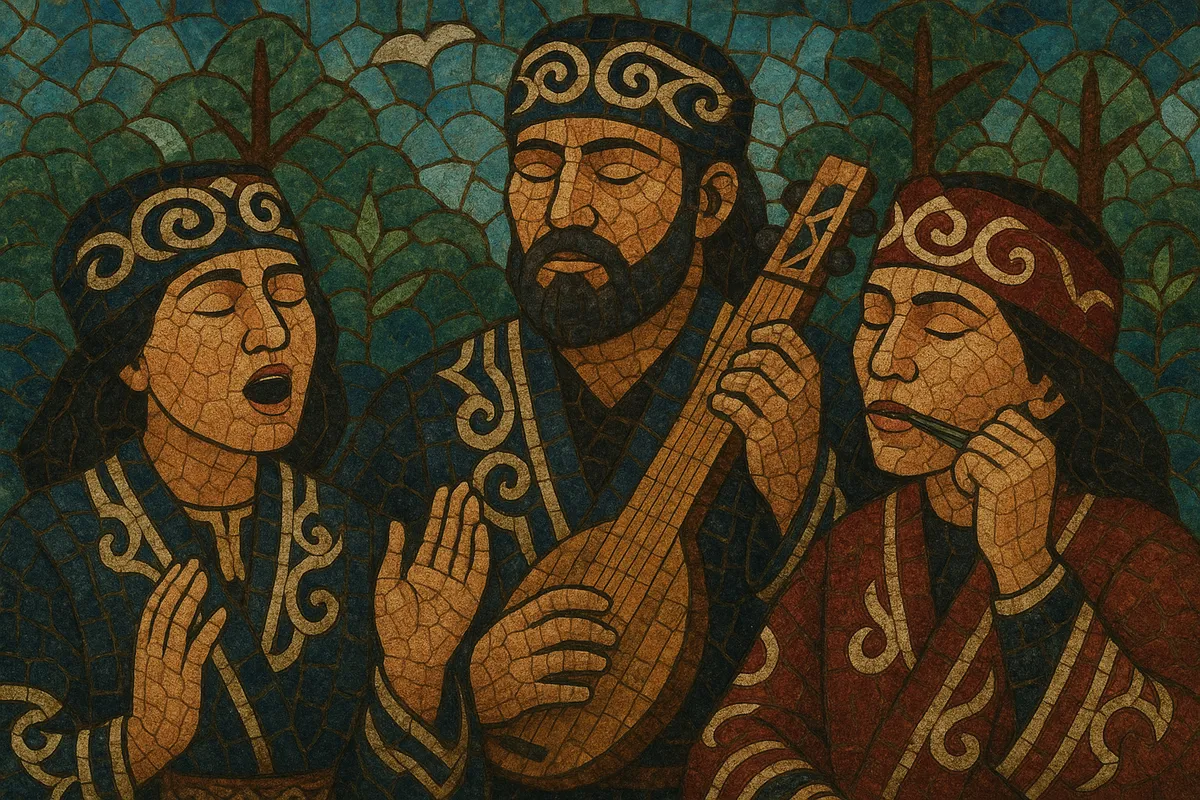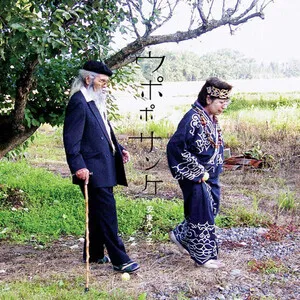Ainu music is the traditional music of the Ainu people of northern Japan (Hokkaidō) and the southern Russian Far East (Sakhalin and the Kuril Islands). It centers on communal singing, ritual chant, and dance songs tied to an animistic worldview in which spirits (kamuy) inhabit all things.
Core vocal forms include upopo (short, often cyclical songs performed in groups), yukar (lengthy epic-chant narratives), and rimse/tapkar (dance songs). Instrumental timbres are distinctive: the tonkori (a long, five‑string zither) provides droning, ostinato patterns, while the mukkuri (jaw harp) creates pulsing, overtone-rich rhythms shaped by the mouth cavity. Textures are usually monophonic or heterophonic, with call‑and‑response, vocables, and handclaps or foot-stomps supplying rhythmic drive.
Melodically, many songs favor pentatonic or modal frameworks and asymmetrical phrasing. Functionally, music accompanies ceremonies (such as the bear‑sending ritual, iomante), social gatherings, games, and lullabies, making it both sacred and everyday in character.
Ainu musical practices are ancient, developing within a hunting‑fishing society across Hokkaidō, Sakhalin, and the Kurils. Music is interwoven with oral literature and ritual life: upopo bind communities through shared rhythm and refrain, while yukar (epic chant) transmit history, ethics, and cosmology. Dance songs (rimse/tapkar) synchronize communal movement and mark seasonal and ceremonial occasions.
The tonkori, a five‑string, long zither indigenous to Sakhalin and Hokkaidō Ainu, underpins pieces with droned, repeating figures and re‑entrant tunings. The mukkuri jaw harp is used by both women and men, producing breath‑timed pulses and glottal articulations. Group singing often employs vocables and call‑and‑response, with clapping and foot‑stamping as percussive elements. In Sakhalin, rekuhkara (a now‑revived vocal game/throat‑style) historically featured among Ainu women as a competitive and social practice.
From the late 19th century, assimilation policies and land dispossession in Japan and Russia suppressed Ainu language and public performance, pushing musical life into private contexts. Nevertheless, elders safeguarded traditions, and field recordings and notations by Ainu cultural leaders and researchers in the mid‑20th century preserved repertories of upopo and yukar.
Cultural advocacy from the 1970s onward, along with language revitalization efforts, sparked renewed public performance. Community ensembles, museum programs, and cultural centers fostered intergenerational teaching. From the late 1990s, artists such as OKI catalyzed a global awareness of Ainu music by foregrounding the tonkori and collaborating across dub, folk, and experimental scenes. Groups like Marewrew re‑center women’s upopo traditions on contemporary stages. The opening of national institutions dedicated to Ainu heritage further expanded educational and performance platforms.
Ainu music now coexists in two vibrant streams: community‑based, language‑driven preservation (ceremonial and social contexts) and artist‑led creative recontextualization (concerts, recordings, cross‑genre collaboration). Both streams reinforce cultural continuity while inviting broader audiences into Ainu sound worlds.







